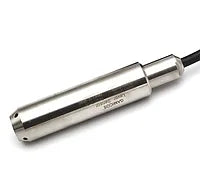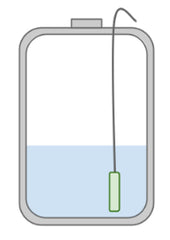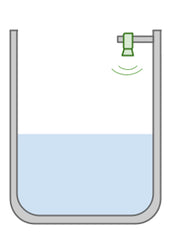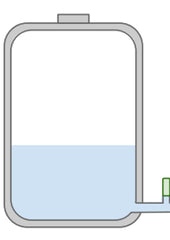Emit a microwave beam which is reflected off the liquid surface subtly changing the frequency, and this is used to measure the distance between the sensor and liquid surface.
| Accuracy |
Suitable for |
Pros |
Cons |
| Excellent. 1mm for 5m probe. |
All liquids, all tank configurations, can handle surface foam and particulates in air. |
Non-contact, accurate, insensitive to condensation or buildup on sensor, insensitive to liquid surface foam, no minimum sensor distance, can be installed near tank walls, no moving parts. |
Expensive, more power required compared to other sensor types, more fiddly installation than pressure sensors. |
Pressure Transducer
Works the same as the submersible level pressure sensor but installed into a liquid pressure pipeline after the tank offtake/shut-off valve and not in the tank.
| Accuracy |
Suitable for |
Pros |
Cons |
| Fair, 10-20mm for 5m tank. |
Most liquids including fuels, chemicals, pressure pipe installation only (tank offtakes). |
Inexpensive, no cables in liquid, insensitive to condensation/liquid foam/turbulence/tank obstructions, no minimum sensor distance, not installed on top of tank. |
Requires access to tank pipe offtake. |








